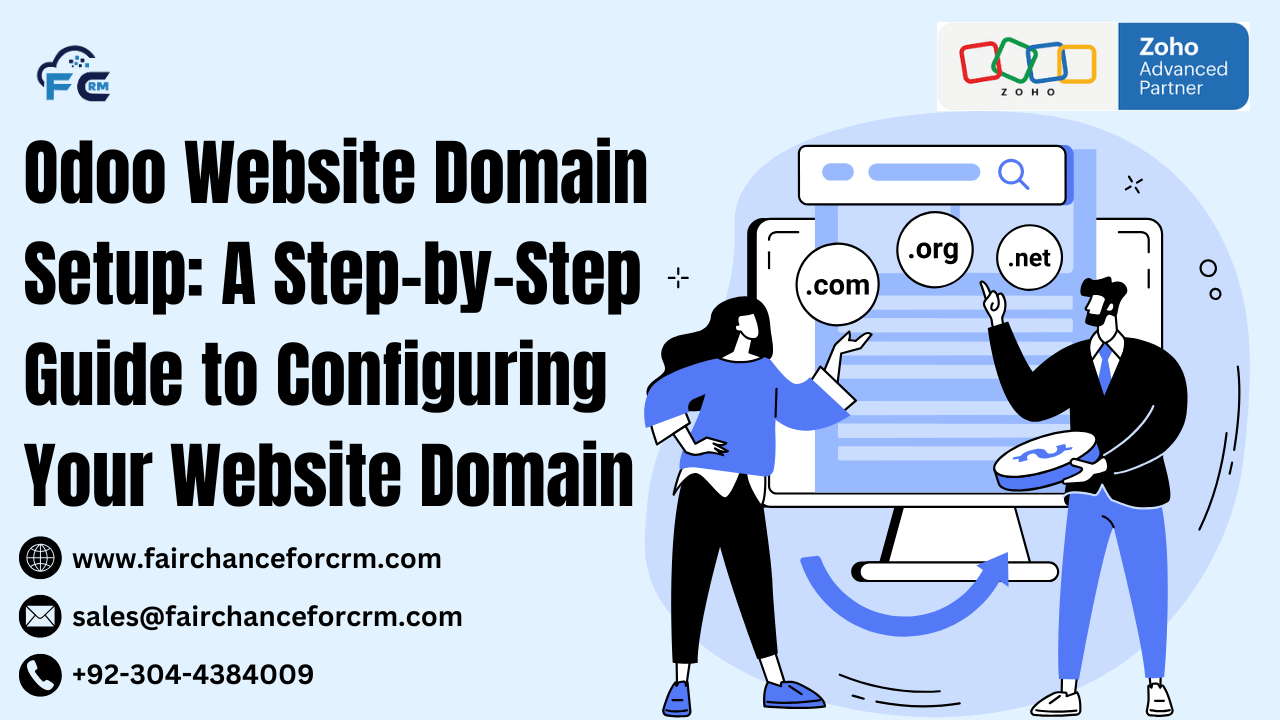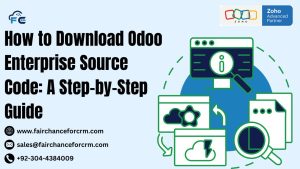Odoo Website Domain Setup is a critical step in ensuring that your business is accessible online. Whether you’re creating an e-commerce store, a corporate website, or a blog, configuring the domain correctly is essential for smooth operation and professional presentation. This article will walk you through the entire process of setting up a domain for your Odoo website, including DNS configuration, SSL setup, and troubleshooting tips. All the information for Odoo Website Domain Setup is given below.
Also Read:
- OpenCat Odoo
- Odoo PlusTeam
- Odoo Employee Skills
- Mix and Match Odoo
- Importing Employee Accounts in Odoo
Understanding Odoo Website Domain Setup
Odoo Website Domain Setup offers an all-in-one platform that includes a website builder, e-commerce tools, and content management features. By default, your Odoo website might be accessible via a subdomain provided by Odoo (e.g., yourcompany.odoo.com). However, for branding purposes and better search engine optimization (SEO), most businesses prefer using their own custom domain (e.g., www.yourcompany.com).
Here’s a step-by-step guide on how to set up a custom domain for your Odoo website:
Step 1: Purchase a Domain
Before configuring a domain in Odoo, you need to purchase one from a domain registrar. Some popular domain registrars include:
- GoDaddy
- Namecheap
- Google Domains
- Bluehost
Once you’ve chosen your domain provider, follow their instructions to purchase the domain name that best suits your business.
Step 2: Set Up Your Domain’s DNS Records
After purchasing your domain, you’ll need to configure your Domain Name System (DNS) settings to point to your Odoo server. This is done by creating DNS records on the domain registrar’s platform.
Types of DNS Records to Configure
There are two main DNS records you’ll need to set up for Odoo:
- A Record (Address Record):
- The A record is used to map your domain to an IP address. This is the most common way to point your domain to your Odoo instance.
- For example, if you’re using an Odoo.sh instance, the A record will be the IP address of your Odoo server.
- CNAME Record (Canonical Name Record):
- The CNAME record is used if you’re setting up a subdomain like
www.yourcompany.comorshop.yourcompany.com. - A CNAME record will point your subdomain to an Odoo-managed domain or server.
- The CNAME record is used if you’re setting up a subdomain like
How to Set DNS Records
- A Record Setup: If you’re hosting Odoo on a server you manage (e.g., Odoo Enterprise on your own server), go to your domain registrar’s DNS management console and add an A record:
- Host:
@oryourcompany.com - Value: Odoo server’s IP address (provided by Odoo or your hosting service)
- TTL: Default or 3600 seconds
- Host:
- CNAME Record Setup (for Subdomains): If you’re setting up a subdomain like
www.yourcompany.com, you’ll need to configure a CNAME record:- Host:
www - Value:
yourcompany.odoo.comor the Odoo server’s assigned domain name - TTL: Default or 3600 seconds
- Host:
Step 3: Add Your Domain to Odoo
Once your DNS records have propagated (this can take up to 24-48 hours), the next step is to configure Odoo to recognize your custom domain.
- Log into your Odoo Instance: Open your Odoo admin panel, typically by navigating to
yourcompany.odoo.comor the appropriate subdomain provided by Odoo. - Navigate to Website Settings:
- From the Odoo dashboard, go to the Website app.
- Then, click on Configuration in the top menu and select Settings.
- Set the Domain Name:
- In the Website settings page, find the Domain Name field.
- Enter your newly purchased domain (e.g.,
www.yourcompany.com) in this field. - Save your settings.
- Configure the Website URL:
- Go to the Website module and click on Edit (the pencil icon) on the top of the page.
- Set your website URL to match the new domain you’ve just configured.
- Test Your Domain:
- Once Odoo is configured with your domain, open a web browser and navigate to your domain (
www.yourcompany.com). - You should see your Odoo website loading as expected.
- Once Odoo is configured with your domain, open a web browser and navigate to your domain (
Step 4: Configure SSL for Secure Connection
To enhance security, it’s recommended to use HTTPS (SSL) for your Odoo Website Domain Setup. SSL encryption secures the data transmitted between your server and your visitors’ browsers.
If you’re using Odoo.sh, the SSL certificate is automatically configured for your domain. However, if you’re using Odoo on your own server, you may need to manually configure SSL.
Using Let’s Encrypt for Free SSL
If you manage your server, you can set up an SSL certificate using Let’s Encrypt, which is a free, automated, and open certificate authority.
- Install Certbot (Let’s Encrypt tool): On your server, install Certbot by running the following commands (on a Linux-based system):
bash
sudo apt update
sudo apt install certbot python3-certbot-nginx
- Generate the SSL Certificate: Use Certbot to generate the SSL certificate for your domain:
bash
sudo certbot --nginx -d yourcompany.com -d www.yourcompany.com
- Automate SSL Renewal: Let’s Encrypt certificates are valid for 90 days. You can set up a cron job to renew the SSL certificate automatically:
bash
sudo crontab -e
Add the following line to renew the certificate every 60 days:
bash0 0,12 * * * certbot renew --quiet
- Verify SSL Configuration: After installation, verify that your website is served securely over HTTPS by navigating to
https://www.yourcompany.com. You should see a padlock symbol in the address bar.
Step 5: Redirect HTTP to HTTPS (Optional but Recommended)
For improved security and SEO, you should ensure that all visitors are redirected from HTTP to HTTPS.
- Edit your Nginx or Apache server configuration to force HTTPS redirection:For Nginx, use this configuration:
nginx
server {
listen 80;
server_name www.yourcompany.com yourcompany.com;
return 301 https://$host$request_uri;
}
- Save and restart Nginx:
bash
sudo systemctl restart nginx
Step 6: Test and Troubleshoot
Once the domain is set up and the SSL certificate is installed, you should test your website thoroughly to ensure everything works correctly.
- Check SSL: Use an SSL checker like SSL Labs’ SSL Test to verify that your SSL certificate is correctly installed and your website is served securely.
- Verify DNS: Use a DNS lookup tool (e.g., MXToolbox) to ensure that your DNS records are correctly configured.
- Clear Browser Cache: If you face issues accessing your site, try clearing your browser’s cache or using a different browser.
Troubleshooting Common Domain Setup Issues
- Domain Not Resolving:
If your domain isn’t resolving to your Odoo website, ensure that your DNS records have propagated. It can take up to 48 hours for changes to take effect. - SSL Errors:
If you encounter SSL errors, check that your certificate is correctly installed and configured. You can use tools likeopensslto debug the certificate installation. - Mixed Content Warnings:
If your site loads but shows mixed content (some assets are still loaded over HTTP), update all references in your website to use HTTPS. - Website Not Loading:
Ensure that Odoo is correctly configured to recognize your custom domain and check that the Odoo instance is running without errors.
Conclusion
Odoo Website Domain Setup is a straightforward process that improves branding, professionalism, and search engine visibility. By following the steps outlined in this guide—purchasing a domain, configuring DNS records, updating Odoo settings, and enabling SSL encryption—you can have your Odoo website running securely under your own custom domain. If you encounter any issues, the troubleshooting tips provided should help you resolve common problems efficiently.
For more information about Odoo Website Domain Setup, visit this link.
If you want to Free Trail Zoho, click on this link.





glad to be one of the visitors on this awing internet site : D.